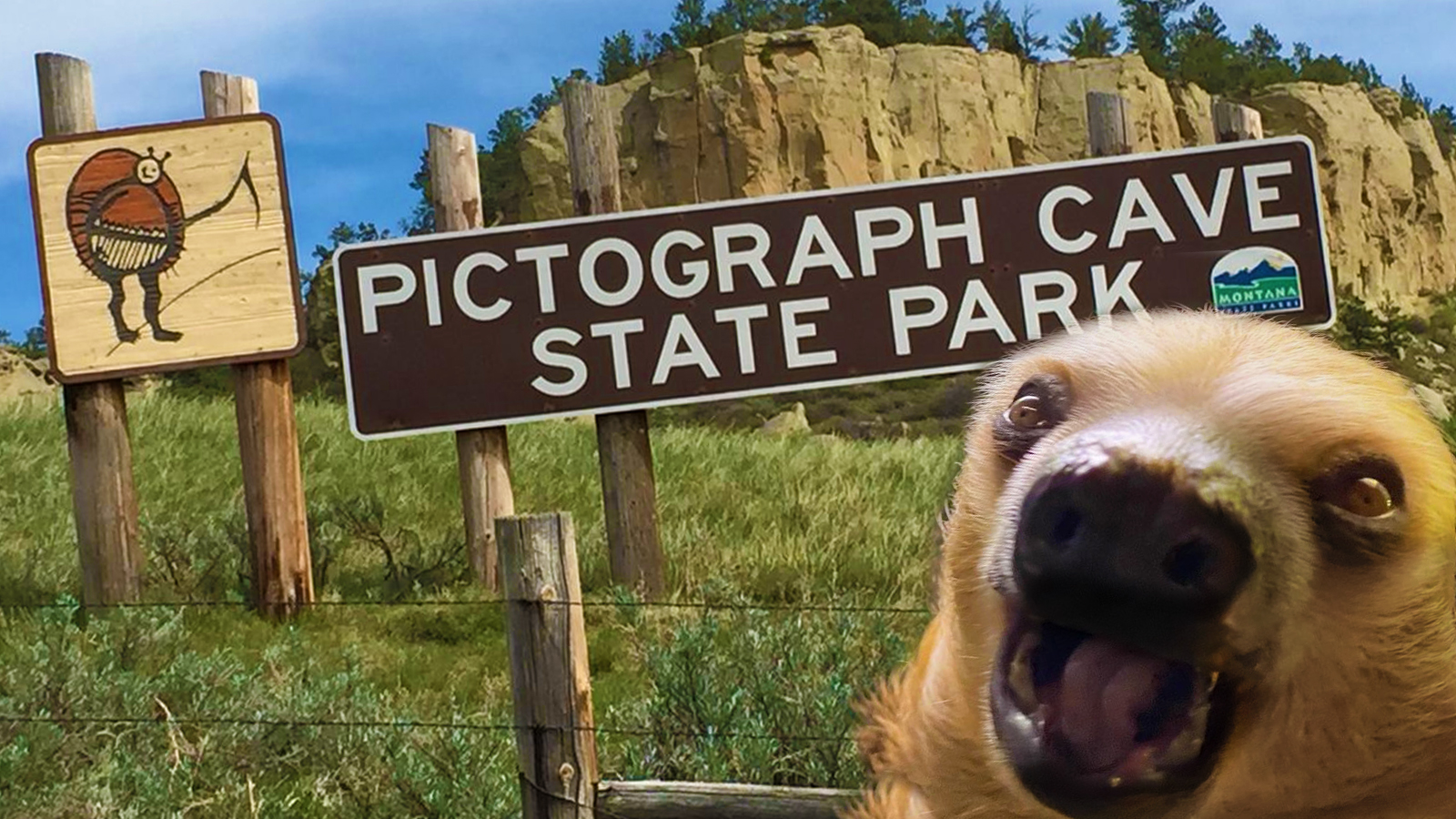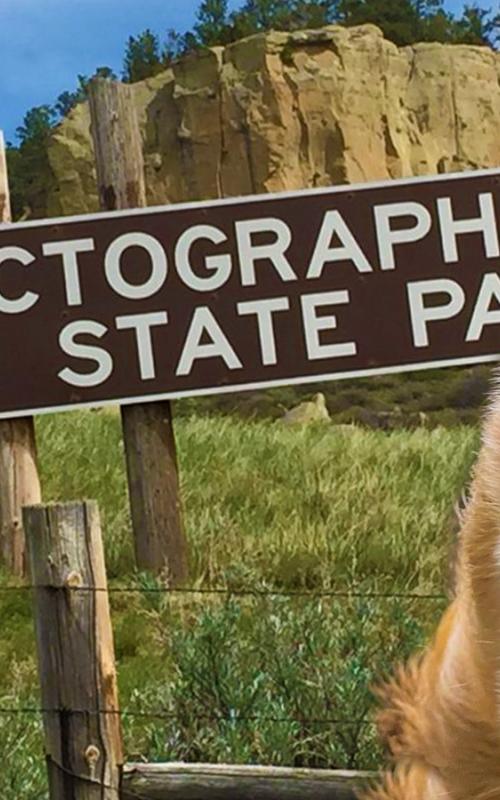More on Billings’ Parks and Other Fun Facts
I’ve studied and written a lot about the parks here in Billings. In fact, many of my friends at ZooMontana think I ought to become a park ranger, and I tend to agree. It sure would be a nice change of pace compared to my hectic life as a social media influencer and celebrity sloth. Anyways, a lot of those same friends often talk with me about the local parks, and there are some I hadn’t yet explored. Given my insistence at being the local know-it-all, I found this unacceptable.
Onyx and Simpson told me that at Two Moon Park, there is a wall that literally cries. I didn’t think that was possible so I had to check it out for myself. Sure enough, the “Weeping Wall” is a major attraction in the park. I asked the wall why it was so sad, and I got nothing. Then, a local human explained to me that the wall wasn’t melancholy (and then explained to me that melancholy means “sad”) but that the weeping is a result of natural spring water seeping through the rock. Apparently in the winter months, the water can freeze and look really cool. I also learned that the park is named after a Northern Cheyenne chief who fought at the Battle of the Little Bighorn, whose name was Two Moon. I was glad I checked out this park, and also relieved that there wasn’t some big meanie picking on helpless walls out there.

Another fun park I’d heard a little bit about but didn’t visit until recently is Pictograph Cave State Park, which they say is a place “to contemplate the origins of human habitation in Montana.” I wasn’t sure what there was to contemplate – didn’t someone just drive you all here, like Director Jeff brought me? Anyways, the Pictograph Cave site was designated as a National Historic Landmark in 1964, because of its archeological significance. Today's visitors can enjoy a unique opportunity to explore the mystery of this extraordinary site.
I learned that Prehistoric hunters who camped in Pictograph Cave left behind artifacts and more than 100 pictographs, or rock paintings. The oldest rock art in the cave is more than 2,000 years old and the interpretations of the pictographs are still subject to debate. The images of animals, warriors and even rifles tell a story that has lasted thousands of years. The park has a pleasant 3/4 loop trail to the caves, with interpretative displays along the route identifying and explaining the natural features, the prehistoric paintings and vegetation found in the area. Pictograph Cave is the deepest of the three main caves, at approximately 160 feet wide and 45 feet deep.
When I have some more time, I’m going to head back and try to figure out what those pictographs mean once and for all.

Finally, someone asked me what’s going on over at Dover Park, right along the Yellowstone River. I talked to some people at the Yellowstone River Parks Association, and they say there are big plans for the park. Two humans named Jim and Virginia Sindelar plan to donate some of their land to be included in the existing park. The map I saw looks like the park will double in size, and include more lakefront land on Dover Lake, which has a beach and some wetlands. The new section of the park calls for stuff like new trails, a sledding hill and another dog park, which I learned from my visit to Lake Elmo is a place where humans play with odd-looking sloths.
I know there are a lot more parks to explore here in Billings, and I can’t wait go out and see them for myself. In the meantime, I’m going to see if Bert can help me interpret those pictographs.





